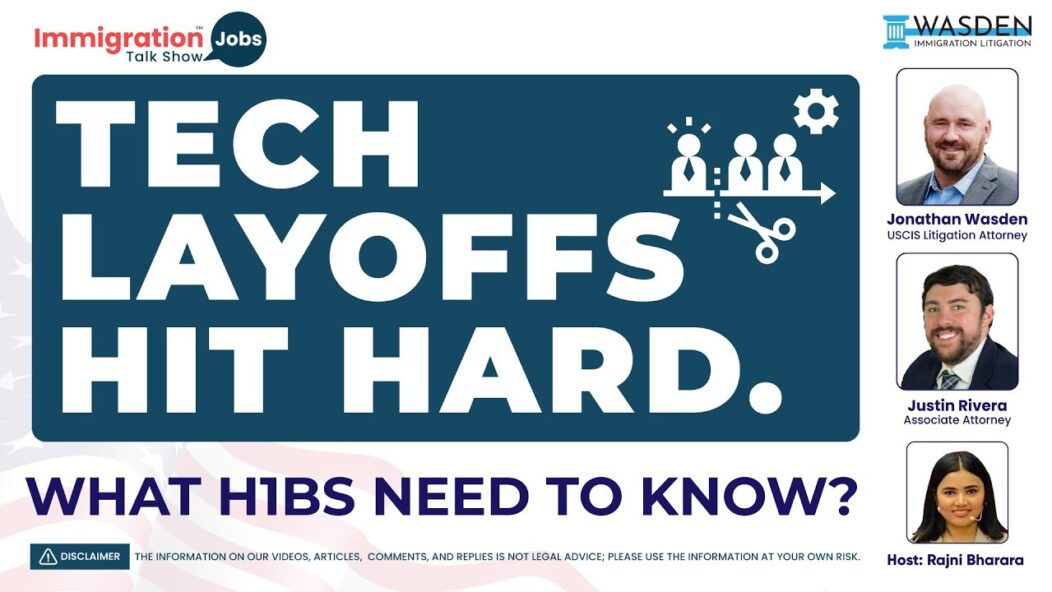As we approach 2024, understanding the PERM process is crucial for employers and foreign workers managing the U.S. immigration system. The Program Electronic Review Management (PERM) process is essential for obtaining permanent residency through employment. This article highlights important insights regarding the timelines for Prevailing Wage Determination (PWD), recruitment strategies, and ways to address potential delays in the application process.
Key Takeaways
- The PERM process involves several stages, including job creation, PWD, and recruitment.
- Current PWD processing times can take 5 to 6 months, impacting recruitment plans.
- Employers can start recruitment before or after receiving the PWD, each with its own pros and cons.
- Common delays in the PERM process can be caused by high application volumes and staffing levels at the Department of Labor.
- Close attention to recruitment practices and documentation can help mitigate delays and ensure compliance.
Understanding the PERM Process in 2024
The PERM process is essential for foreign workers seeking permanent residency in the U.S. In 2024, understanding this process is more important than ever due to various changes and challenges. Here’s a breakdown of the key stages involved:
Key Stages of the PERM Process
- Job Creation: Employers must identify a permanent job opportunity.
- Prevailing Wage Determination (PWD): Employers request a wage determination from the Department of Labor (DOL).
- Labor Market Test and Recruitment: Employers must demonstrate that no qualified U.S. workers are available for the position.
- Filing the PERM Application: The application is submitted electronically via Form ETA 9089.
Role of the Department of Labor
The DOL oversees the entire PERM process, ensuring that hiring foreign workers does not negatively impact the U.S. labor market. They review applications and determine if employers have met all requirements.
Impact of Regulatory Changes
Changes in immigration policies can affect processing times and requirements. Staying updated on these changes is crucial for employers and applicants alike.
Understanding the PERM process is vital for both employers and foreign workers. Delays can lead to significant issues, such as gaps in work authorization.
In summary, mastering the PERM process in 2024 requires careful attention to detail and an understanding of the various stages and regulations involved. Employers must be proactive in their approach to ensure a smooth application process.
Prevailing Wage Determination: Timelines and Challenges
Current PWD Processing Times
The current processing time for a Prevailing Wage Determination (PWD) is approximately 168 days. This can vary based on the complexity of the case and the workload of the Department of Labor (DOL). Here’s a quick overview of the processing times:
Type of Case Average Processing Time
Complete Cases 18 days
Incomplete Cases 35 days
Overall PWD 6-10 months
Factors Affecting PWD Delays
Several factors can lead to delays in obtaining a PWD:
- Backlogs at DOL: High volumes of applications can slow down processing.
- Application Accuracy: Errors in the application can lead to requests for more information.
- Regulatory Changes: New laws or guidelines can impact processing times.
Strategies to Expedite PWD
To help speed up the PWD process, consider the following strategies:
- Submit Complete Applications: Ensure all required information is included to avoid delays.
- Monitor Processing Times: Stay updated on current processing times to plan accordingly.
- Engage with Experts: Consulting with immigration lawyers can help tackle complexities.
The PWD is a crucial step in the PERM process, and timing is essential. Starting recruitment before the PWD is issued can save time but may also lead to complications if the wage is higher than expected.
By understanding these timelines and challenges, employers can better prepare for the PERM process and avoid unnecessary delays.
Effective Recruitment Strategies for PERM Applications
Timing Recruitment with PWD
Starting recruitment at the right time is crucial. Waiting until after the Prevailing Wage Determination (PWD) is issued can help avoid wasting resources. This approach allows employers to ensure compliance with validity periods and address any issues with the PWD before recruitment begins. Here are some key points to consider:
- Avoid unnecessary advertising costs.
- Ensure accurate job descriptions based on the PWD.
- Align recruitment efforts with the PWD’s validity period.
Advertising Requirements and Best Practices
Employers must follow specific advertising requirements to test the U.S. labor market. Here are some best practices:
- Use multiple platforms for job postings, such as newspapers and online job boards.
- Keep records of all recruitment efforts to demonstrate compliance.
- Ensure job ads clearly state the job title, duties, and requirements.
Advertising Medium Duration Notes
Newspaper 2 weeks Must be a Sunday edition
Online Job Boards 30 days Use reputable sites
Internal Posting 10 days Notify current employees
Overcoming Recruitment Challenges
Recruitment can be challenging, especially in a competitive job market. Here are some strategies to overcome these challenges:
- Engage with local communities to attract diverse candidates.
- Offer competitive salaries based on the PWD to attract qualified applicants.
- Be prepared to conduct interviews beyond the standard 60-day recruitment period if necessary.
Effective recruitment is the heart of the PERM process. By carefully planning and executing recruitment strategies, employers can significantly improve their chances of success in obtaining labor certification.
Understanding PERM Processing Delays
Common Causes of PERM Delays
Delays in the PERM process can be frustrating for both employers and foreign workers. Here are some common reasons:
- Increased Workload: The Department of Labor (DOL) is handling a higher number of applications than ever before.
- Inaccurate Applications: Mistakes in the application can lead to requests for more information or even denials.
- Audit Requests: About 30% of applications are audited, which can add several months to the processing time.
Impact of DOL Staffing on Timelines
The DOL’s staffing levels play a significant role in how quickly applications are processed. When there are fewer staff members, it can lead to:
- Longer wait times for application reviews.
- Increased chances of audits due to rushed processing.
- Overall delays in the PERM process, affecting both employers and employees.
Mitigating Delay Risks
To help reduce the risk of delays, consider these strategies:
- Start Recruitment Early: Begin the recruitment process while waiting for the Prevailing Wage Determination (PWD). This can help speed up the overall timeline.
- Ensure Accurate Documentation: Double-check all forms and documents to avoid errors that could lead to delays.
- Stay Informed: Regularly check for updates on processing times from the DOL to stay ahead of potential issues.
Remember: Delays in the PERM process can impact not just the employer but also the foreign worker’s ability to stay in the U.S. and work legally. Keeping track of timelines and being proactive can make a significant difference.
Current Processing Times Without Audit With Audit
Average Time 311 days 498 days
The Role of USCIS and DHS in the PERM Process
USCIS Involvement in PERM
The United States Citizenship and Immigration Services (USCIS) plays a crucial role in the PERM process. After the Department of Labor (DOL) approves the PERM application, it is forwarded to USCIS for further processing. Here are the key responsibilities of USCIS in this context:
- Reviewing the PERM application for compliance with immigration laws.
- Issuing the I-140 petition, which is essential for foreign workers seeking permanent residency.
- Monitoring the overall immigration process to ensure it aligns with current regulations.
DHS Policies Affecting Labor Certification
The Department of Homeland Security (DHS) also impacts the PERM process through its policies. These policies can affect how labor certifications are processed and can include:
- Changes in immigration laws that may alter eligibility criteria.
- New guidelines that can streamline or complicate the application process.
- Enforcement of regulations that ensure compliance with labor market protections.
Interagency Collaboration
Collaboration between USCIS and DHS is vital for the PERM process. This partnership ensures that both agencies work together to:
- Share information regarding applications and compliance.
- Coordinate efforts to address any issues that arise during the application process.
- Implement policies that protect U.S. workers while facilitating the hiring of foreign talent.
Understanding the roles of USCIS and DHS is essential for employers and foreign workers managing the PERM process. The 2024 USCIS Ombudsman report highlights challenges and progress in U.S. immigration.
Labor Market Considerations for PERM Filings
Assessing Worker Availability
When filing for a PERM application, it’s essential to evaluate the availability of U.S. workers for the job. This involves:
- Identifying the job title and description clearly.
- Understanding local labor market conditions to gauge competition.
- Analyzing unemployment rates in the area to determine the pool of potential candidates.
Impact of Labor Market Trends
Labor market trends can significantly influence PERM filings. Key trends to consider include:
- Shifts in industry demand that may affect job availability.
- Emerging skills requirements that could limit the pool of qualified candidates.
- Economic conditions that impact hiring practices and worker mobility.
Balancing Employer Needs and Compliance
Employers must balance their hiring needs with compliance requirements. This includes:
- Offering competitive wages that meet or exceed the prevailing wage.
- Conducting thorough recruitment efforts to demonstrate good faith.
- Documenting all recruitment activities to ensure compliance with DOL regulations.
Understanding the labor market is crucial for successful PERM filings. Employers must be proactive in their recruitment strategies to avoid delays and ensure compliance with regulations.
By considering these factors, employers can address the complexities of the PERM process more effectively and enhance their chances of approval.
Post-PERM Steps: From Approval to Green Card
Filing the I-140 Petition
After your PERM application (ETA-9089) is approved, the next step is to file the I-140 petition with U.S. Citizenship and Immigration Services (USCIS). This form is crucial as it confirms your eligibility for a green card based on employment. Make sure to select the right category and include all necessary documents and fees.
Transitioning to Green Card Status
Once the I-140 is approved, you can move on to the next steps:
- Form I-485 (Adjustment of Status): If you are in the U.S., file this form to change your status to a lawful permanent resident. You can only do this when your priority date is current, which you can check using the Visa Bulletin.
- Consular Processing: If you are outside the U.S., you will need to go through consular processing. This means submitting your documents to the National Visa Center (NVC) and attending an interview at a U.S. consulate.
- Work Authorization (EAD): If you have dependents, they can apply for an Employment Authorization Document (EAD) after the I-140 approval, allowing them to work while waiting for the green card.
Handling Post-Approval Challenges
While waiting for your green card, it’s important to:
- Maintain your current visa status to avoid any legal issues.
- Regularly check the Visa Bulletin to know when you can file Form I-485 or proceed with consular processing.
- Be aware of the 36-month green card extension effective September 10, 2024, which aims to reduce processing delays and provide more flexibility for applicants.
Staying informed about processing times and requirements can help you manage the green card process more smoothly. By being proactive, you can avoid unnecessary delays and ensure a successful transition to permanent residency.
After your PERM application gets approved, the next steps are crucial for securing your green card. It’s important to stay informed and take action promptly. If you need guidance through this process, visit our website for expert advice and support. Don’t wait—start your journey to permanent residency today!
Final Thoughts on PERM in 2024
In conclusion, understanding the PERM process in 2024 is essential for employers and foreign workers alike. As we have seen, the timelines for Prevailing Wage Determinations (PWD) and recruitment strategies can significantly impact the overall application process. Employers must carefully consider when to start recruitment, weighing the benefits of beginning early against the risks of wasted resources. By staying informed and working with knowledgeable immigration attorneys, employers can manage the complexities of the PERM process more effectively. This proactive approach not only helps in avoiding delays but also ensures compliance with all necessary regulations. Ultimately, being prepared and strategic can lead to a smoother path toward securing employment-based immigration for foreign workers.
Frequently Asked Questions
What is the PERM process?
The PERM process is a way for employers to get approval to hire foreign workers for jobs in the U.S. It shows that there are no qualified U.S. workers for the job.
How long does it take to get a Prevailing Wage Determination (PWD)?
Currently, it takes about 5 to 6 months to receive a PWD.
What are the steps involved in the PERM process?
The main steps include job creation, obtaining a PWD, conducting recruitment, and filing the PERM application.
What happens if my PERM application is delayed?
Delays can happen due to high application volumes or staffing issues at the Department of Labor, but you can check the status online.
Can I start recruiting before I get my PWD?
Yes, you can start recruiting before receiving the PWD, but you must file the PERM application within the PWD’s validity period.
What should I do after my PERM application is approved?
Once approved, the next step is to file the I-140 petition for a green card.
Authors: Jonathan Wasden & Justin Rivera, Immigration Attorneys
How useful was this post?
Click on a star to rate it!









